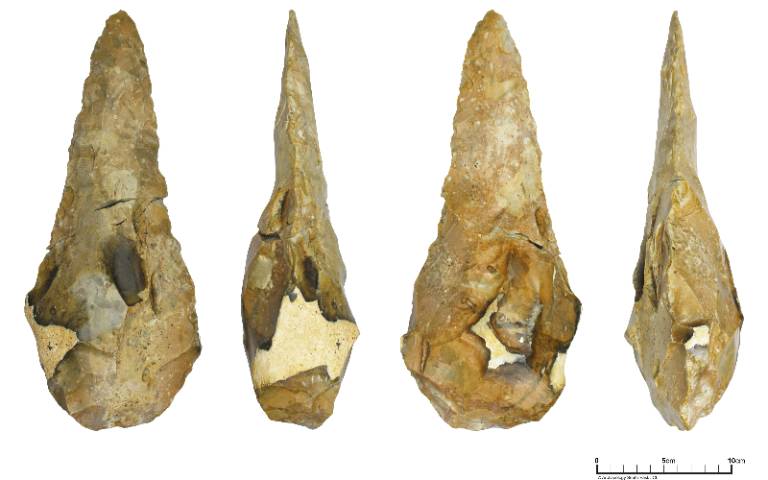Inputs by Prashasti Kulkarni
A team of archaeologists from University College, London, led by Letty Ingrey, discovered a set of around 800 Acheulean stone tools that are around 300,000 years old.
They were found buried in sediments of an ancient river channel located in the Medway Valley in England.
The tools discovered included two large flint knives that, according to the archaeologists, look like two giant hand axes.
Handaxes are ancient tools made of stone that have been cut on both sides: one side being sharp, to cut meat or hunt, and the other being slightly round for other purposes.
The handaxes found during this discovery were similar to the handaxes described above, but were much larger and had a thicker base.
According to the archaeologists, these handaxes were between the range of 22-30 cm, the largest of the two being 29.5 cm in length. This is by far the longest handaxe from the Paleolithic era found in England and archaeologists are not yet sure about the purpose of having them at this size, as it is usually impractical to hold such a large tool.
Researchers have created an online 3D model of the handaxe. You can see it here.
This discovery was published in the journal – Internet Archology.

Acheulean: An ancient industry of a certain shape of stone tools, usually represented by a handaxe.
Paleolithic Era: The Paleolithic Era was the phase that marked the beginning of the Stone Age (a time where stone tools were used very often). During this era, primitive (not very advanced, basic) stone tools were very common. This is also called the Early Stone Age.
The Paleolithic era was followed by the Mesolithic era and the Neolithic era, all part of the Stone age, which began around 2.6 million years ago.

